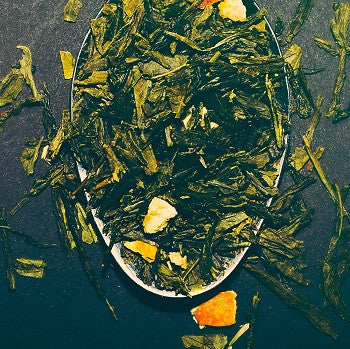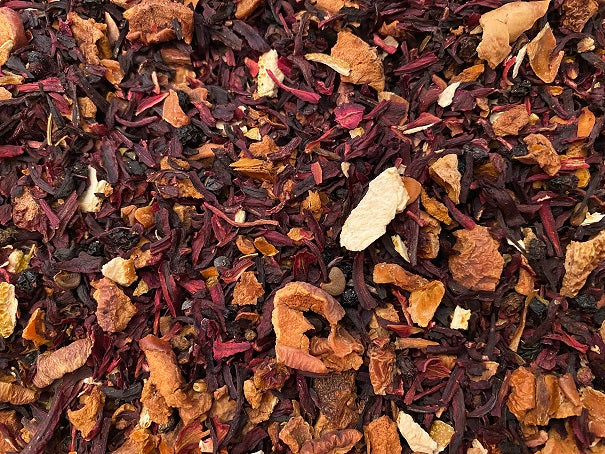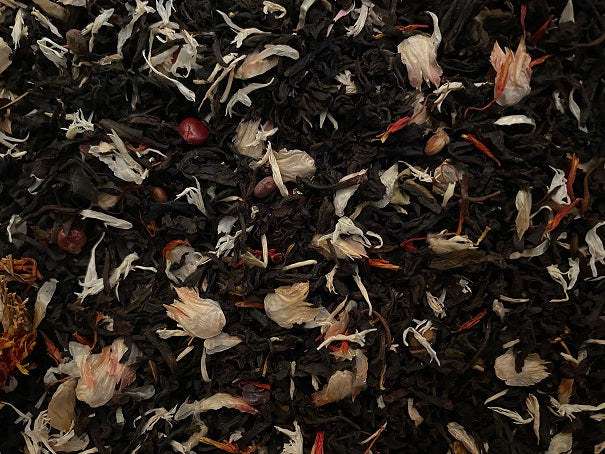The Scoop on Tea
Black Teas are composed of tea leaves that have been fully oxidized which results in the evaporation of water out of the leaf and allows more oxygen from the air to be absorbed. Then leaves are withered on racks, softened and then rolled in machines. The rolled leaves are spread onto trays and racks and allowed to oxidize and, finally, are dried to halt oxidation. Black teas typically have darker brown leaves and produce a richer, more full-bodied, robust liquor in the cup. Brew water to a rolling boil 210-212 degrees (constant stream of large, swirling bubbles) and steep tea leaves for approximately 3-5 minutes.
Pu’erh Teas are aged black teas with a smooth, rich earthy quality with little to no astringency. The process for pu’erh teas is similar to green teas but with an added fermentation step where the tea leaves are allowed to undergo a microbial fermentation and further oxidation. Brew water to a rolling boil 210-212 degrees (constant stream of large, swirling bubbles) and steep tea leaves for approximately 3-6 minutes.
Oolong Teas are semi-oxidized teas so they are not as delicate or subtle as green teas, but not as full-bodied as black teas. Oolong teas can be oxidized anywhere from 10-80% and can be similar in appearance to green teas on the lower end of the spectrum or black teas if allowed to further oxidize. Oolong teas are flavorful and fragrant with an aromatic taste in the cup. Brew water to 185-200 degrees (water will have bubbles the size of a pearl with some steam to water where the bubbles are connected to one another in a steady stream) and steep tea leaves for approximately 3-7 minutes.
Green Teas are non-oxidized teas. Since it is critical that green teas remain green no oxidation must occur—this is accomplished by applying heat. After slightly withering the tea leaves, oxidation is stopped by either pan-firing (China) or steaming (Japan) the leaves. Green teas generally have a subtle, delicate flavor and often have a vegetal taste. Brew water to 160-180 degrees (water will have tiny bubbles the size of a pinhead that just begin to rise to surface with gentle steam vapor to water bubbles the size of crab eyes with vertical streams of steam rising upward) and steep for approximately 1-3 minutes.
White Teas are very delicate and tender teas plucked from flowery tea buds (use only tiny tea buds). They are non-oxidized teas which means they are only briefly withered and only light natural oxidation occurs before they are steamed and dried to halt the process. The leaves turn gray-green or gray-brown during the drying. Their infusions are pale, golden and possess a hint of sweetness. Brew water to 175-190 degrees (water bubbles will look like crab eyes with slight steam to water bubbles the size of a pearl with a bit more steam present) and steep tea leaves for approximately 2-5 minutes.
Herbal & Fruit Teas are naturally caffeine free and are made from flowers, berries, fruits, herbs and sometimes have added flavor. Most are delicious iced. They are technically not “true teas” as they are not made from the Camellia sinensis plant from which all tea originates. Brew water to 212 degrees (constant stream of large, swirling bubbles) and steep tea for approximately 5 minutes.
Rooibos Teas are made from a red bush plant grown only in South Africa. Naturally caffeine free this tea is known for its high mineral content and antioxidants and produces a fruity, sweet, flavorful cup. Brew water to 212 degrees (constant stream of large, swirling bubbles) and steep tea for approximately 5 minutes.




